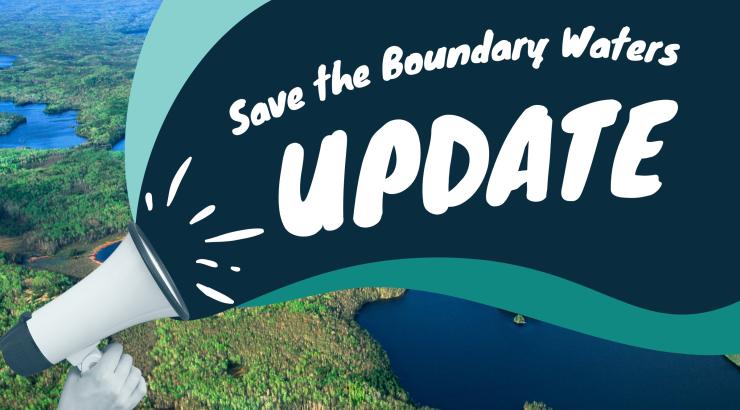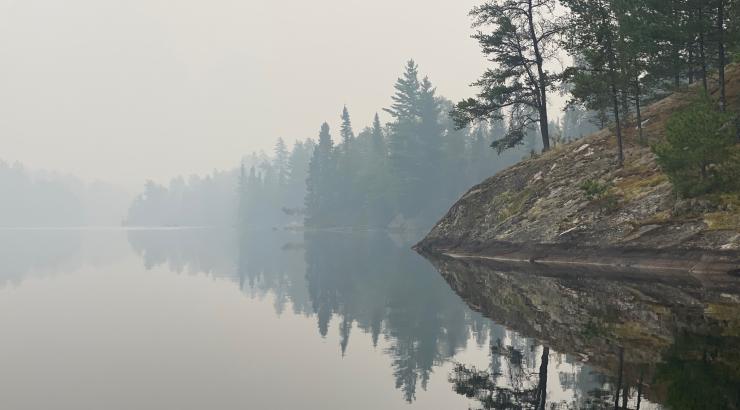Can you imagine a mine underneath a lake next to the Boundary Waters?
Alarmingly, Franconia Minerals, a wholly owned subsidiary of Twin Metals Minnesota, recently submitted a request to the Minnesota Department of Natural Resources (DNR) to undertake exploratory drilling on state land on the shores of Birch Lake, one of the most popular recreation lakes adjacent to the Boundary Waters.
This exploration is solely to advance a sulfide-ore copper mine underneath Birch Lake. Birch Lake is a well-known waterbody used for the production of wild rice in the Superior National Forest upstream of the Wilderness.
Sulfide-ore copper mining next to the Boundary Waters Canoe Area Wilderness (BWCAW) poses significant risks and dangers to the lakes, rivers, forests, ecosystems, and local communities that comprise this special area. Chilean mining conglomerate, Antofagasta, which owns Twin Metals, is making every effort possible to put this toxic type of mining next to America’s most visited Wilderness.
 Map from Quetico Superior News
Map from Quetico Superior News
One of the main concerns for this risky type of mining is the potential contamination of waterways and groundwater. Sulfide-bearing ore contains heavy metals, which can react with water and oxygen to produce sulfuric acid, known as acid mine drainage (AMD). This acidic pollution can then leach out toxic heavy metals, such as lead, mercury, and arsenic, into the waterways that flow directly into the Boundary Waters.
This is unacceptable. We must ask Governor Walz to do the right thing by telling his Department of Natural Resources to REJECT Twin Metals’ application to conduct exploratory drilling and by protecting this Wilderness by banning copper mining on state lands in the Boundary Waters watershed.
We need both federal AND state land mining bans to protect the Boundary Waters permanently.
In January 2023, our Save the Boundary Waters coalition succeeded in its goal of securing a 20-year mining ban on federal lands in the Boundary Waters watershed. We have a companion goal of a ban on state lands, and this disastrous exploratory drilling plan is precisely why such a state ban is critical and necessary if we are to save the Boundary Waters.
Further, as part of our lawsuit brought under the Minnesota Environmental Rights Act, the DNR has determined that Minnesota’s regulations on noise and light are inadequate to protect the Boundary Waters from pollution, impairment, and destruction. The DNR has said it will commence rule-making to expand the buffer around the Wilderness to address this pollution, yet it is about to approve exploratory drilling that will generate the very noise and light it said would pollute the Boundary Waters.
On October 9, the Campaign to Save the Boundary Waters submitted a letter of objection to the Minnesota Pollution Control Agency and Department of Natural Resources Commissioners, outlining why this disastrous proposal cannot be allowed to move forward.

The Boundary Waters region is home to a diverse range of wildlife, including threatened and endangered species, like lynx, wolves, and Northern Long Eared Bats. The mining activities, such as excavation and blasting, could disrupt habitats, and displace animal populations. The noise, vibrations, and changes in water quality caused by mining operations can have detrimental effects on the delicate balance of the ecosystem in the area, leading to a cascade of negative consequences for the biodiversity of the region.
As fellow Wilderness defenders, we know that the recreational and economic value of the Boundary Waters cannot be ignored. The pristine wilderness attracts thousands of visitors each year who come to experience its natural beauty and engage in activities such as canoeing, fishing, and hiking. The mining operations could have a significant impact on the tourism industry and the local economy, as people may be reluctant to visit a region compromised by the environmental and aesthetic damages caused by mining activities.
The risks of sulfide-ore copper mining are not only limited to immediate consequences but also extend to long-term environmental degradation, as the mining can leave a lasting legacy of pollution and destruction. Given the fragility and importance of the Boundary Waters ecosystem, it becomes crucial to consider alternative economic activities that have a lower ecological impact and prioritize the preservation and sustainable management of this unique wilderness area.



